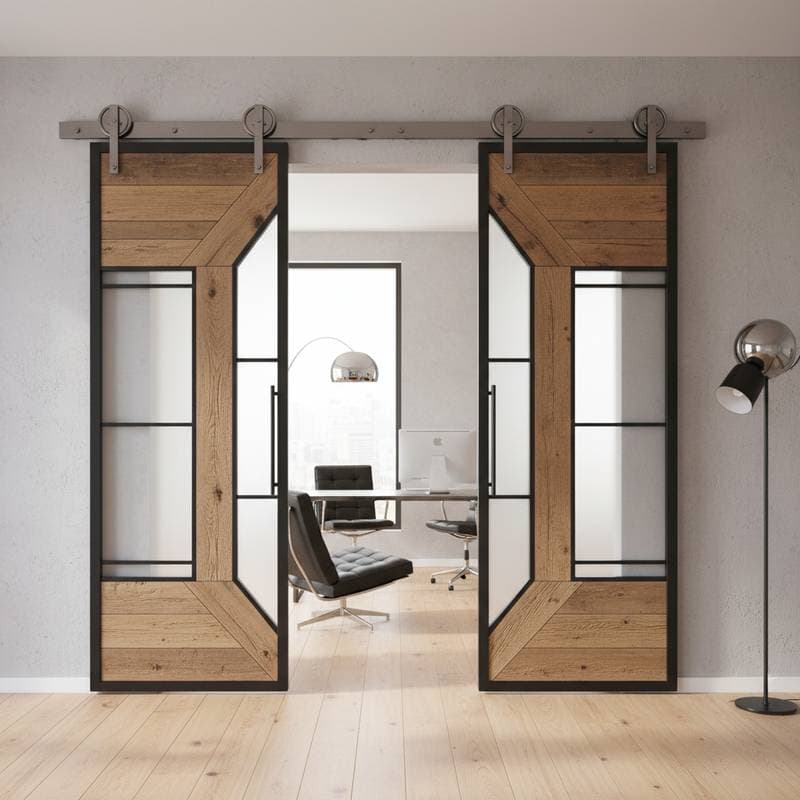The $8K Black Steel Upgrade Every 2025 Kitchen Needs
Black steel window frames emerge as a defining element in contemporary kitchen design. These frames deliver a sleek industrial aesthetic that integrates seamlessly with traditional and modern interiors alike. Homeowners undertaking kitchen renovations benefit from the dramatic visual enhancement and enduring practical advantages of black steel windows. A complete kitchen installation generally requires an investment of approximately $8,000, influenced by factors such as window dimensions, material specifications, and regional labor costs.
Why Black Steel Windows Lead Kitchen Design Trends
Black steel frames establish bold visual boundaries that organize space effectively while permitting abundant natural light to enter. They surpass traditional wood or vinyl options by providing slimmer profiles, greater structural integrity, and a refined architectural presence. Industry designers regard black steel windows as essential statement features in kitchens, as they introduce distinctive character without relying on additional ornamental elements.
The material excels in durability, resisting deformation, fractures, and color degradation even in environments with fluctuating temperatures and moisture levels. Application of high-quality powder coating ensures the black finish remains intact for several decades. Michael Ruiz, a certified window installer based in Austin, observes, “Homeowners appreciate black steel for its blend of upscale appearance and effortless care. The elevated initial expense proves justified through extended service life and aesthetic endurance.”
Detailed Cost Breakdown for Black Steel Installations
The expense for incorporating black steel windows into a kitchen typically falls between $7,000 and $9,500. This figure encompasses materials, custom fabrication, and expert installation services. Variations arise from window measurements, selected glazing options, and bespoke elements such as corner units or expansive floor-to-ceiling installations.
| Material/Service | Cost Range | Key Features |
|---|---|---|
| Standard black steel frames | $6,500 to $8,000 | Industrial aesthetic, exceptional strength |
| Custom steel window systems | $8,000 to $11,000 | Precise sizing, unique surface treatments |
| Installation labor | $1,200 to $2,500 | Secure sealing, accurate positioning, regulatory adherence |
| Optional energy-efficient glazing | $800 to $1,500 | Enhanced thermal efficiency, ultraviolet blocking |
In compact kitchens, outfitting a single prominent window may range from $3,000 to $4,000, inclusive of labor. Extensive projects involving numerous apertures or specialized geometries often surpass $10,000. Fabrication and installation costs average $150 to $300 per square foot for comprehensive setups.
Key Factors Shaping Black Steel Window Pricing
Multiple elements determine the total expenditure for black steel windows:
- Frame thickness and profile design: Opting for narrower frames elevates costs due to the advanced engineering required for structural stability.
- Glass specifications: Incorporating double- or triple-pane glass increases expenses yet optimizes thermal retention and noise reduction.
- Finish specifications: Selecting superior powder coatings or textured variants raises the price while bolstering resistance to environmental wear.
- Installation demands: Properties with aged structures or solid masonry exteriors frequently necessitate supplementary reinforcements, extending labor time.
- Geographic and contractor variations: Prevailing wage rates differ significantly by location, directly impacting overall project budgets.
Black Steel Windows Versus Alternative Frame Materials
| Frame Material | Average Cost per Window | Maintenance Requirements | Aesthetic Qualities |
|---|---|---|---|
| Vinyl | $400 to $800 | Low | Functional, restricted hues |
| Aluminum | $600 to $1,200 | Moderate | Contemporary, streamlined |
| Wood | $700 to $1,500 | High | Inviting, classic |
| Black Steel | $2,000 to $4,000 | Very low | Enduring, industrial chic |
Although black steel commands a higher price than competing materials, numerous homeowners deem the investment prudent. The superior resilience and visual sophistication of steel distinguish it, particularly when compared to wood, which demands periodic refinishing. In the long term, the robustness of black steel mitigates the upfront cost differential through reduced replacement needs.
Essential Installation Practices and Regulatory Compliance
Engaging certified professionals remains imperative for black steel window projects. The substantial weight of these frames necessitates meticulous alignment to achieve airtight seals and fluid functionality. Installers commonly integrate thermal breaks into the steel construction to minimize conductive heat loss, thereby sustaining optimal kitchen temperatures throughout seasons.
Certain regions mandate permits for window modifications, particularly those altering load-bearing components. Consult local building authorities prior to project commencement to verify requirements. Reputable contractors manage the permit process and subsequent inspections, streamlining compliance within the installation package.
Versatile Design Applications and Styling Choices
Black steel frames adapt effortlessly to diverse kitchen motifs, enhancing white cabinetry, organic wood elements, and granite surfaces with striking contrast. The subdued matte black tone accentuates structural nuances and elevates overall ambiance. Available in casement, awning, or stationary pane styles, these windows support personalized mullion arrangements tailored to specific spatial configurations.
Strategies for Long-Term Preservation
Black steel windows demand little ongoing attention to sustain their pristine condition. Wipe surfaces periodically with a solution of mild detergent and water to remove residues. Conduct biannual examinations of seals and hardware to identify potential issues, ensuring continued efficiency and preventing drafts.
With diligent maintenance, black steel installations endure beyond fifty years, preserving their original hue, form, and precision. This longevity reinforces their role as a strategic enhancement for kitchens, delivering sustained elegance and performance that elevates daily living spaces.






